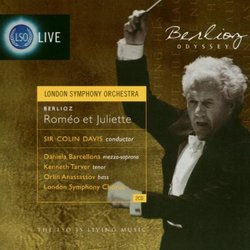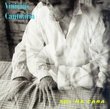| All Artists: H. Berlioz Title: Berlioz: Romeo & Juliette Members Wishing: 0 Total Copies: 0 Label: Lso Live Release Date: 1/30/2002 Album Type: Import, Live, Original recording reissued Genre: Classical Style: Opera & Classical Vocal Number of Discs: 2 SwapaCD Credits: 2 UPC: 822231100324 |
Search - H. Berlioz :: Berlioz: Romeo & Juliette
 | H. Berlioz Berlioz: Romeo & Juliette Genre: Classical
|
Larger Image |
CD DetailsSimilar CDs
Similarly Requested CDs
|
CD ReviewsAmazingly modern Jacques COULARDEAU | OLLIERGUES France | 07/25/2003 (5 out of 5 stars) "Berlioz avoided composing an opera on this subject, so there is no dramatically staged story. Three voices and a small chorus tell it, essentially the beginning and the end of it. The only character that appears in this « symphony » is Father Lawrence to explain the drama at the end and make the Capulets and Montagues swear to stop their strife. Berlioz nearly only relies on the music to make us enter a tale we know by heart anyway, hence to make us feel the story with our ears and with his composition. Berlioz uses contrasting instruments to evoke various emotions, keeping brass instruments and percussions for dramatic and sombre moments. He thus opposes Romeo and Juliet's inner world of love, peace, the dream of a better world, to the outside world of hatred and war. Berlioz relies on the expressivity of his music that varies - with the same instruments most of the time - from the lightest evanescent softness to the most erratic and even obsessively crushing force. He particularly resorts to swirling and whirling movements to conjure the passion of love and the joy of the heart, the slow flowing of a peaceful rivulet in some plain or mountain under the moon or in some secret garden. Love is an escape and the music renders it with gusto and delicateness. Even death, or at least Mercutio's real death and Juliet's false death, becomes a dream and Queen Mab is the Fairy Queen of the night, of eternal night, of the passage from the dream of love to the nightmare of death, from the sleep of satisfied lovers to the sleep of eternal peace. And yet Berlioz keeps the drama lurking behind every scene with some brass instrument or some drum that may stampede or punctuate the advancement of the tale. The descent of Juliet to her tomb resounds like a mini-Requiem, like a tenebrae, a sombre piece of music so popular at the end of the 17th century in France. Yet the slow march down into the tomb ceaselessly turns into a waltz and back into a funeral march and the candles are extinguished one after the other in the music itself. We can see the darkness falling onto the vault. This leads to the death of the two lovers and there the violins become prophetic in their style, announcing the music of the next century with broken musical periods and chaotic sentences like obsessive chords. This expressive music is tremendously romantic and yet - maybe because of it - surprisingly modern and this « symphony » is unclassifiable. It is no sonata, no opera, no oratorio, not even a real symphony. It is Berlioz pure and simple.Dr Jacques COULARDEAU, University of Perpignan" Not a bad recording, but there are better Neal Stevens | Greensboro, NC | 03/01/2009 (3 out of 5 stars) "The sound here is quite acceptable, although the choir and the violins are recessed as if way in the distance. The Monteaux version on Westminster puts you inside the trombones. It is recorded very close up, as close as I have ever heard any symphonic recording. The prior Davis/LSO recorded on Philips puts you in row L orchestra seating. This latest LSO Live version seats you at the back of the balcony. But, if the performance had been exceptional, the sound would not stand in my way.
Davis is a highly qualifed Berlioz conductor. Pacing is about average. The LSO plays well enough. But the solo singers here are not as strong as those on the earlier Davis, the Monteaux, or the Munch. I have not heard the Davis/Vienna live recording on Philips, but, as it sells on this site for over $120 I gather than someone thinks that it is also pretty good. So, there is not much reason to put up with the sound here when you can get better overall performances. Recommended for Davis completetists only. " |

 Track Listings (7) - Disc #1
Track Listings (7) - Disc #1






